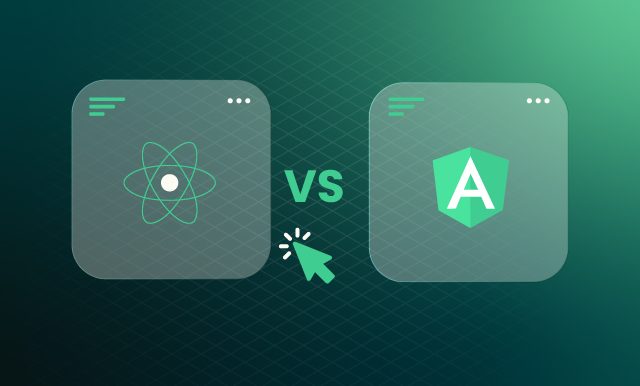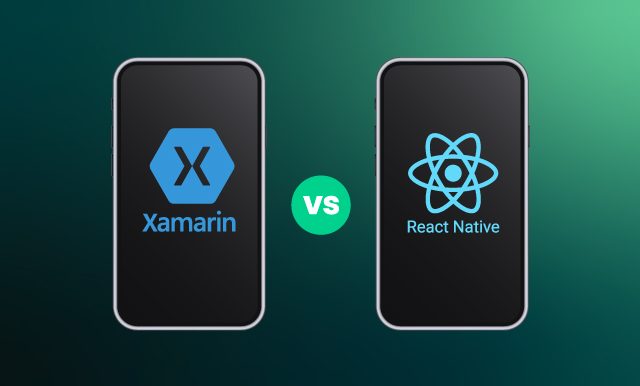Deciding whether to use Angular or React for your next web development project can be challenging. Both frameworks have their strengths and weaknesses, and there is no clear consensus on which is better.
In this article, we’ll compare the two frameworks and try our best to show their weaknesses and strengths so that it can be easier for you to choose one.
React Overview
React.js is a JavaScript library created and supported by Facebook that helps developers build user interfaces with declarative components. It plays well with other front-end libraries and frameworks, including Angular and jQuery, and enables developers to quickly create dynamic user interfaces that run smoothly across all devices. By utilizing a Virtual DOM (Document Object Model) and one-way data flow architecture, React makes it easy for developers to manage state and effectively handle changes to UI.
Key Features
React’s top features include:
- Dynamic UI: React makes creating dynamic and interactive UI easy with its virtual DOM concept. This allows developers to quickly build complex UI components without writing thousands of lines of code, which significantly increases productivity. React also allows developers to quickly update existing UI components without having to rewrite the entire component from scratch.
- Complex data modeling: React provides a robust data-modeling layer that allows developers to quickly and easily construct complex data models in a modular way. This helps developers build and maintain efficient, reliable applications that are easier for users to interact with.
- Component reusability: With React, developers can create reusable components that can be used across multiple projects and websites. This saves both time and money when building applications. Components can also be shared between different teams within an organization or even externally via open-source libraries like NPM or GitHub.
- Declarative syntax: React’s declarative syntax makes it easier for newbies and experienced developers to create robust user interfaces quickly and easily without needing deep knowledge of complex coding techniques or frameworks that other languages (JavaScript or HTML/CSS) require.
- Server-side rendering: Most web applications built with React are rendered on the server side before being delivered directly to the user’s browser, This makes them more performant and secure than those built purely with client-side technologies.
Who Uses React?
Since its initial release in 2013, React has been adopted by many companies as a tool for building robust software products and optimizing user experiences. Companies such as Instagram, Dropbox, and BBC utilize React to develop interactive and engaging web pages while keeping the code clean and manageable.
Furthermore, many startups leverage React’s versatility and accessibility to provide a wide range of services, including content management systems, eCommerce solutions, and even games.
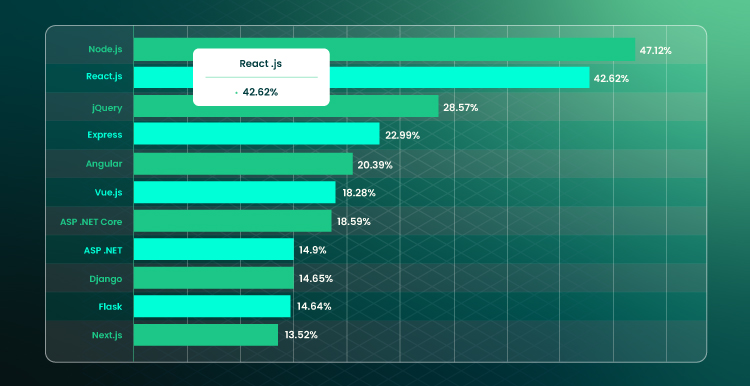
With its ability to be integrated with other frameworks and library components, React is an ideal choice for creating sustainable digital products that scale with growth.
Angular Overview
Angular is a popular open-source platform for cross-platform, web, and mobile application development. It is maintained by Google and includes various tools intended to make coding more accessible, faster, and more productive. With client-side and server-rendering support, developers can create dynamic user interfaces that function seamlessly on multiple platforms. The programming language used is TypeScript, which offers greater flexibility in creating responsive UIs with fewer code lines. Angular also introduces architecture patterns such as MVC (Model View Controller), thus promoting efficient app development. Overall, the use of Angular provides an all-inclusive development experience while ensuring quick delivery time – making it an ideal choice for most developers today.
Key Features
Angular’s top features include:
- Component-based architecture: Angular is a structured framework that allows developers to create, extend, and maintain web applications with reusable components. It is based on the Model-View-Controller (MVC) pattern. It utilizes custom HTML attributes to enable two-way data binding between the view layer and the model layer of an application. This allows developers to quickly build dynamic web applications without needing additional code.
- Ajax support: Angular implements features such as XHR and JSONP, allowing developers to make asynchronous requests seamlessly without having to write additional code for each request. This helps streamline the development process and makes it easier for developers to create complex applications quickly.
- Angular CLI: Angular CLI is a command line interface that simplifies the development process by providing an easy way to generate components, modules, services, etc. It also helps to manage projects, perform unit testing, and build applications with minimal time investment.
- Readability: Angular uses TypeScript, which is a syntactically super-set of JavaScript and adds optional static typing and class-based object-oriented programming concepts to JavaScript code, making it more readable and easier to maintain and debug.
- Easy maintenance: The Model View Controller (MVC) architecture makes it easy for developers to maintain the application by separating business logic from user interface elements. This allows developers to quickly update one aspect of an application without affecting other parts of the application’s functionality or structure.
Who Uses Angular?
Angular has become a go-to platform for enterprises ranging from financial institutions to media companies looking to implement rapid development practices and streamline their applications. Many prominent software houses and independent developers have taken advantage of the framework’s productive capacity for developing feature-rich websites in minimal time.
Companies in various industries, such as healthcare, retail, education, media, and entertainment, use Angular to build sophisticated User Interfaces (UIs). It is also used by tech giants such as Google and Forbes.
Due to its flexibility as well as scalability, Angular continues to make its mark in the industry, making it an invaluable tool for professional developers across the world.
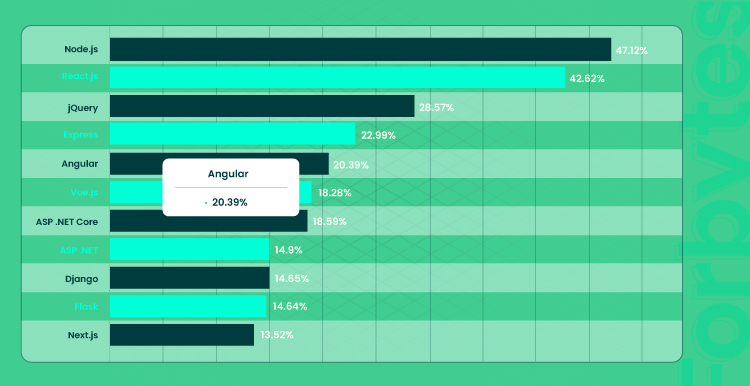
Companies such as Microsoft, Adobe, and The Guardian are some large organizations that use Angular in their projects.
Angular vs. React: Tech Overview
Several differences should be considered when discussing the technical aspects of Angular vs. React. The architecture of each framework is different, and both offer different advantages.
Performance & DOM
React.js offers top-notch performance and efficient DOM manipulation with its intuitive, declarative programming model. This allows developers to write highly effective code that runs quickly, ensuring applications are always running smoothly while offering rich user experiences. With performance-oriented techniques such as lazy loading, virtualization, and memoization built into React components and the use of Node server-side rendering, applications have the potential to reach unprecedented levels of scalability and speed. In addition to exceptional performance, React developers enjoy faster development cycles as the Virtual Document Object Model (VDOM) intelligently keeps track of changes in the UI state. It only updates what has been changed instead of reloading the entire page.
One of the most impactful aspects of Angular is its expansive use of the DOM in page rendering. DOM configuration directly affects the user experience, as it dictates what can and cannot be viewed on any page. Angular’s extensive API assists with DOM manipulation in a way that makes Angular webpages straightforward yet powerful. Applications that leverage the full extent of Anglar’s integration with the DOM will see optimal performance, helping pages load faster and users interact efficiently.
Data Binding
One key benefit for the developers using Angular is its implementation of both one-way and two-way data binding. With one-way data binding, the view element is updated whenever the corresponding model state changes, ensuring that the user interface always reflects the most up-to-date data. The two-way data binding enables models and views to update each other in reciprocal transactions, cutting down on manual coding time significantly while still providing an accurate reflection of all pertinent data.
React.js has embraced this concept profoundly with its one-way data-binding approach. React binds data to a component via props, immutable properties stored within the component’s state that can be rendered as HTML attributes or inline style objects applicable to particular elements. This makes it easier for developers to manage their codebase by encapsulating smaller parts of the user interface and making them reusable in other components.
Backward Compatibility
If you decide between React and Angular, one major factor to consider is backward compatibility. Backward compatibility affects a framework’s ability to upgrade its features without negatively impacting a project’s existing code. Angular takes an all-or-nothing approach — when you upgrade it, the whole application must be reworked to accommodate the new features. React gives users more control by allowing them to integrate new changes over time with their existing codebase slowly. This flexibility makes React especially beneficial for complex applications that require frequent updates and changes over long periods of time.
Conversely, Angular requires a complete rewrite and reinstallation of the entire framework to ensure successful upgrades. As a result, any older projects written in Angular will become obsolete unless they are either rewritten or actively maintained by the development team.
Scalability
The primary differences between React and Angular regarding scalability lie in what each solution enables developers to do within the framework. React is a Javascript library that allows developers to create individual UI components and assemble them into an application that functions coherently. On the other hand, Angular is an actual JavaScript framework providing developers with multiple tools for assembling an application, including pre-built components. As such, React generally necessitates more developer effort to develop a large-scale high-performance application since there are no extra layers of support but offers more freedom within the framework.
So while scaling a React app may require more time and resources upfront, there could be great cost savings in the long run due to its flexibility. Conversely, when it comes to scalability, Angular provides “out of the box” efficiency and convenience at the expense of extensibility or customizability. This makes React overall a better option for large-scale applications or applications with complicated code bases.
Dependency Injection
One crucial area where the frameworks differ significantly is their dependency injection approach. Angular uses a hierarchical dependency injection system, while React takes a more traditional injection system where the dependencies are not organized in any single order or hierarchy.
Here’s an Angular DI code example:
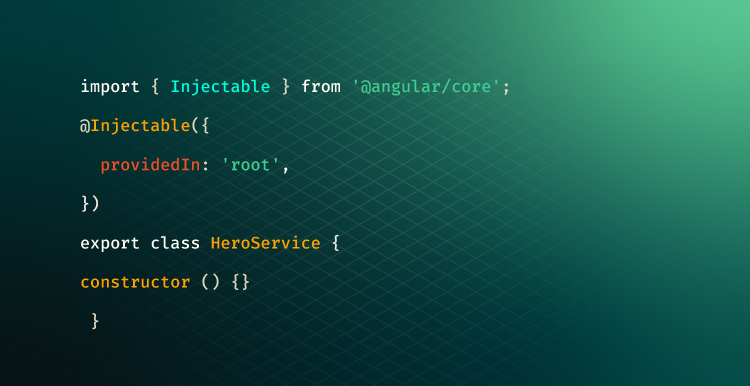
Angular’s system allows it to enforce patterns that make it easier to delineate control flow, while React’s traditional injection places control within the programmer’s hands via their code architecture decisions.
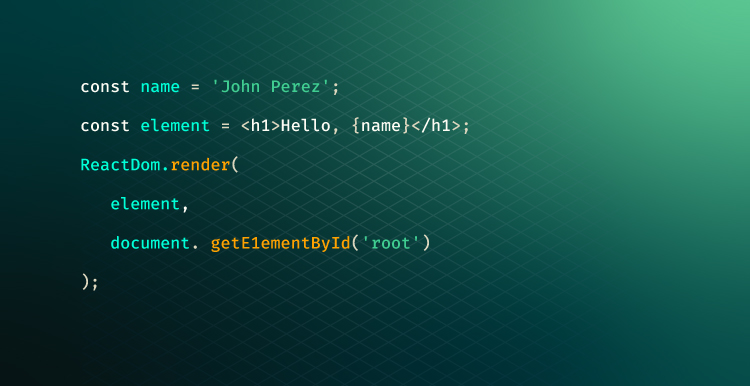
The right option for your project depends largely upon which type of development you are doing, so it is always important to research both options closely before deciding which framework best suits your needs.
Component Architecture
React makes creating user interfaces quick and easy. It allows developers to isolate components of an application into separate modules. This makes it easier to maintain and modify applications with React as smaller chunks of code become more straightforward and easier to manage. Furthermore, React’s reusable components can be shared between multiple projects, significantly reducing development time and costs.
When building a project based on React, developers will have to use its supporting tools and integrations, some of which are:
- Redux. A library designed to help manage application state.
- Babel. Enables cross-browser compatibility.
- Webpack. Streamlines development workflows.
Angular’s component architecture is an excellent way to build a modular and extensible application. It allows developers to create robust, performant applications quickly and efficiently by having individual components that can be loaded at runtime. Furthermore, components in Angular tend to have a self-sufficient structure. This enables them to be reused and rearranged throughout the application as needs change. This kind of flexible code design not only promotes more straightforward development cycles but also saves both time and money due to the reusability of components.
Bundle Size
Considering the usage of either Angular or React when developing web applications, think of bundle size. A bundle, in terms of programming, is a file that contains all of the code necessary to run a particular service. The Angular project compiles into larger bundles than that of React. This can lead to longer downloads and potentially slower loading speeds for users and clients. The use of tree-shaking, smaller packages as well as pre-rendering has been adopted within the React project to reduce bundle size without compromising the quality or functionality of the application.
No such practices are present in Angular, which can lead to much bigger bundles and longer download times than those generated by React. Therefore, bundle size is essential when deciding between using Angular and React for web development.
Angular vs. React: When to Choose What?
Due to its advanced CSS styling capabilities, Angular makes it easy for developers to create responsive applications that look great on any device or browser size. Developers can maintain consistent user experiences across multiple platforms while still having control over specific design choices suited for different devices or browsers. Moreover, Angular allows developers to create custom components that can then be reused across multiple projects, saving them significant amounts of time when building new applications or upgrading existing ones.
React is an excellent choice for developing complex web applications because of its built-in virtual DOM, declarative coding style, and component-based structure. Its Virtual DOM ensures that updates to the UI are handled efficiently and responsively. At the same time, its declarative coding style encourages the author to think in terms of “what not how” when creating UI components. React’s component-based structure also makes it simple to reason about complex UI changes, making sure they remain synchronized across multiple platforms. When you need a dependable, highly performant JavaScript library for your next web application, choose React.
Final Word
Angular and React have their own strengths and weaknesses, so it’s important to choose the one that best suits your needs. If you’re looking for a feature-rich framework that is easy to use, then Angular may be the better option. However, if you want a lightweight framework that offers more flexibility, then React may be a better choice.
If you’re looking to take your enterprise to the next level and beyond, look no further than Forbytes. Our dedicated team of professionals specializes in helping companies optimize their digital products, business strategies, and innovation pursuits.
Contact us today and get your project up and running.

Our Engineers
Can Help
Are you ready to discover all benefits of running a business in the digital era?

Our Engineers
Can Help
Are you ready to discover all benefits of running a business in the digital era?
